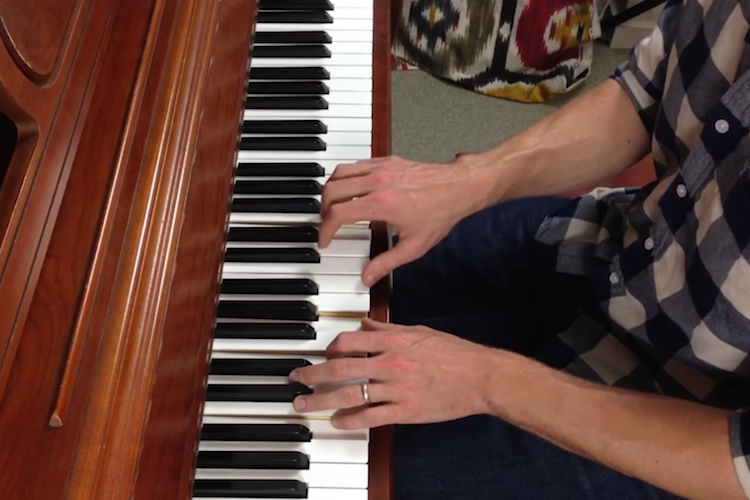This video is an excerpt of our free course “Music Theory for Beginner Pianists.”
The piano is an astounding instrument. It offers players the opportunity to experiment with a nearly endless range of textures, dynamics, and even timbres. Of course, being faced with all those options can be pretty overwhelming, especially for those who are new to the instrument or don’t have much experience coming up with their own parts.
Traditionally, beginner pianists build their foundation in two ways: learning to read music (with complete, written-out pieces), and learning to play by ear. The interesting thing is that many early musicians experience a huge disconnect between those two skills. Analysis, even in a basic sense, is often overlooked until well into the learning experience, when in reality, it’s a habit we should be stressing early on.
Playing or hearing something and recognizing what you like or don’t like about it is a huge step toward developing you musical sense of self. But let me encourage you to take that thought process a step further. What exactly do you like about what the music? Can you replicate it? Perhaps more importantly, can you adapt it?
In the featured video about broken chords, above, some of that work has already been done for you. The instructor, Ian Temple, breaks down some patterns we all hear on a regular basis. As you consider these patterns, ask yourself where you may have heard them before and how you might be able to incorporate them in your own playing and arranging.
By the way, if you’re interested to learn more about how to harness the intersections between jazz, improvisation, and modern music like hip-hop in your own music, you’re going to love Soundfly’s newest course with jazz pianist and beat producer, Kiefer: Keys, Chords, & Beats.
1. Arpeggio
Arpeggiating a chord basically means playing its notes one after the other in either ascending or descending order. Try playing roots in your left hand, while arpeggiating chords in your right. You’ll end up playing something a bit similar to the piano part in Coldplay’s song, “Clocks.”
2. Alberti Bass
Alberti bass is a pattern that was hugely popular in the Classical era, and was used by composers like W.A. Mozart and Domenico Alberti (for whom it was eventually named). Essentially, you play the notes in this order: lowest, highest, middle, highest and repeat. Though we definitely associate its sound with that period, it’s actually an incredibly versatile technique that can easily be incorporated into just about any style, as is made clear by the Chantays’ classic hit, “Pipeline.”
3. “Pop Pattern”
Nicknamed the “pop pattern,” this arranging device can be achieved by rocking between the bottom and top notes of a chord. One great example of this strategy is the piano part in “Imagine.”
Do you have some other favorite broken chord patterns and examples? We’d love to check them out so add them to the comments below.
Happy practicing!
Don’t stop here!
Keep learning about theory and harmony, composing and arranging, songwriting, and more, with Soundfly’s in-depth online courses. Subscribe for access to all, including The Creative Power of Advanced Harmony, Orchestration for Strings, and our exciting new course with Grammy-winning pianist and producer, Kiefer: Keys, Chords, & Beats.




